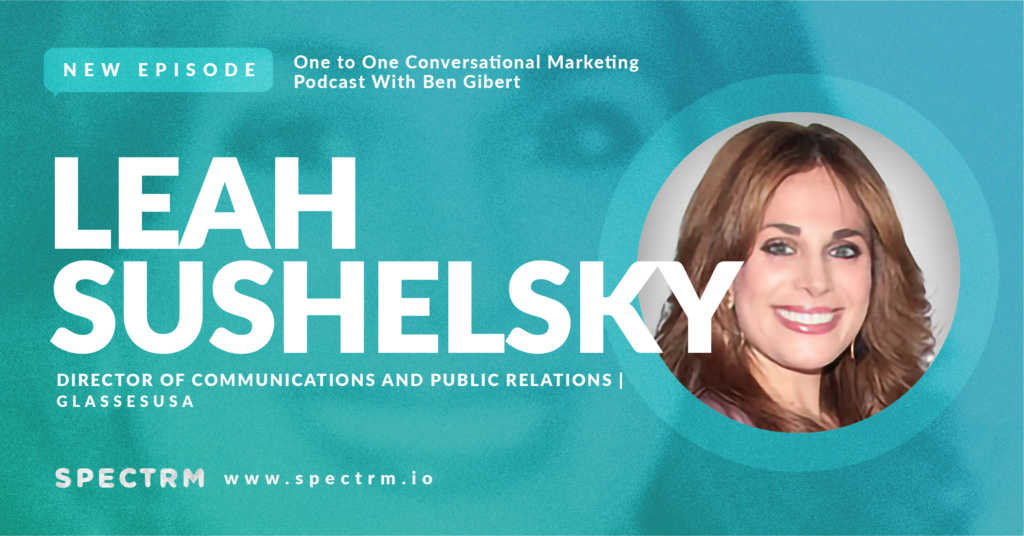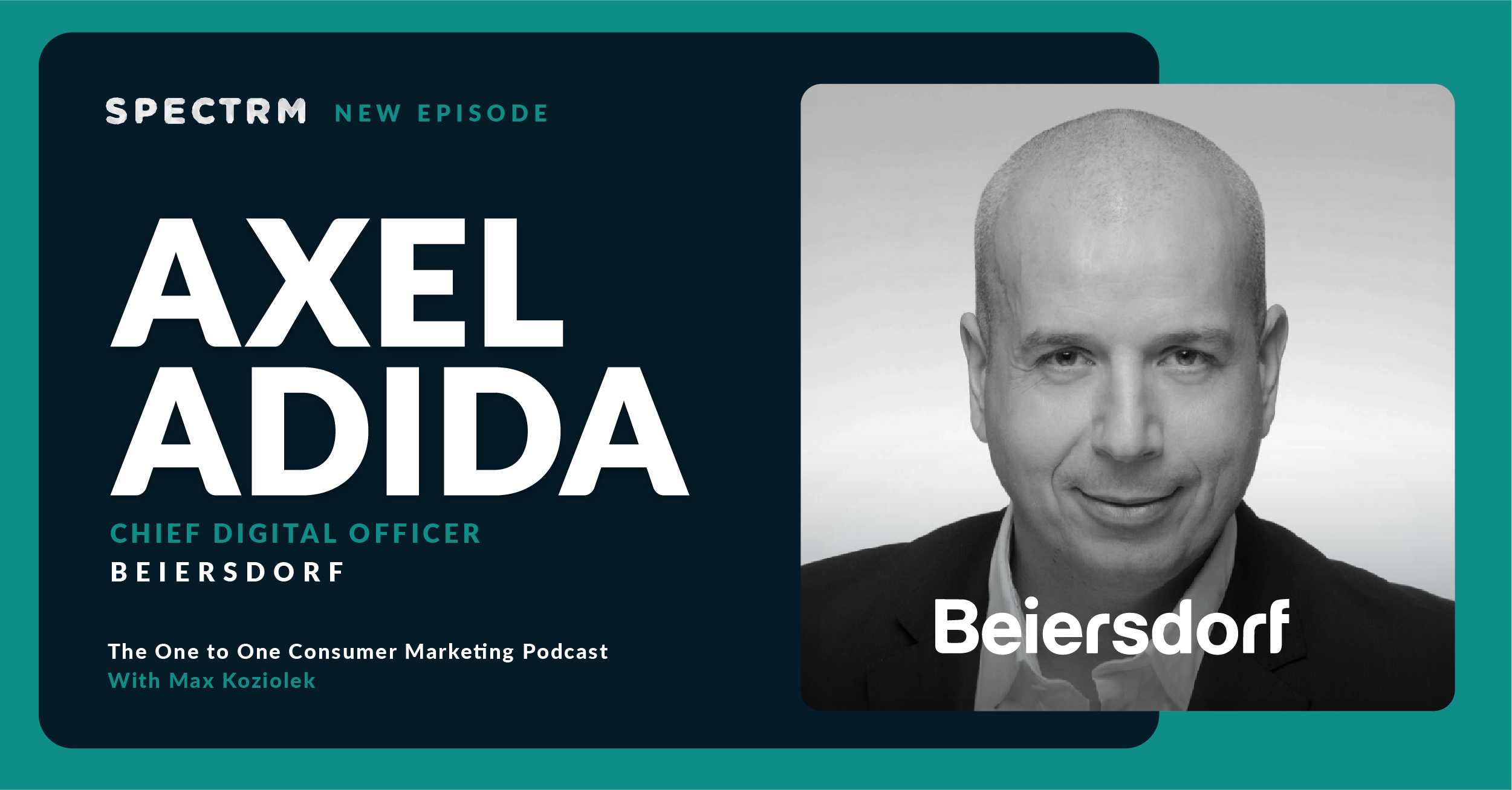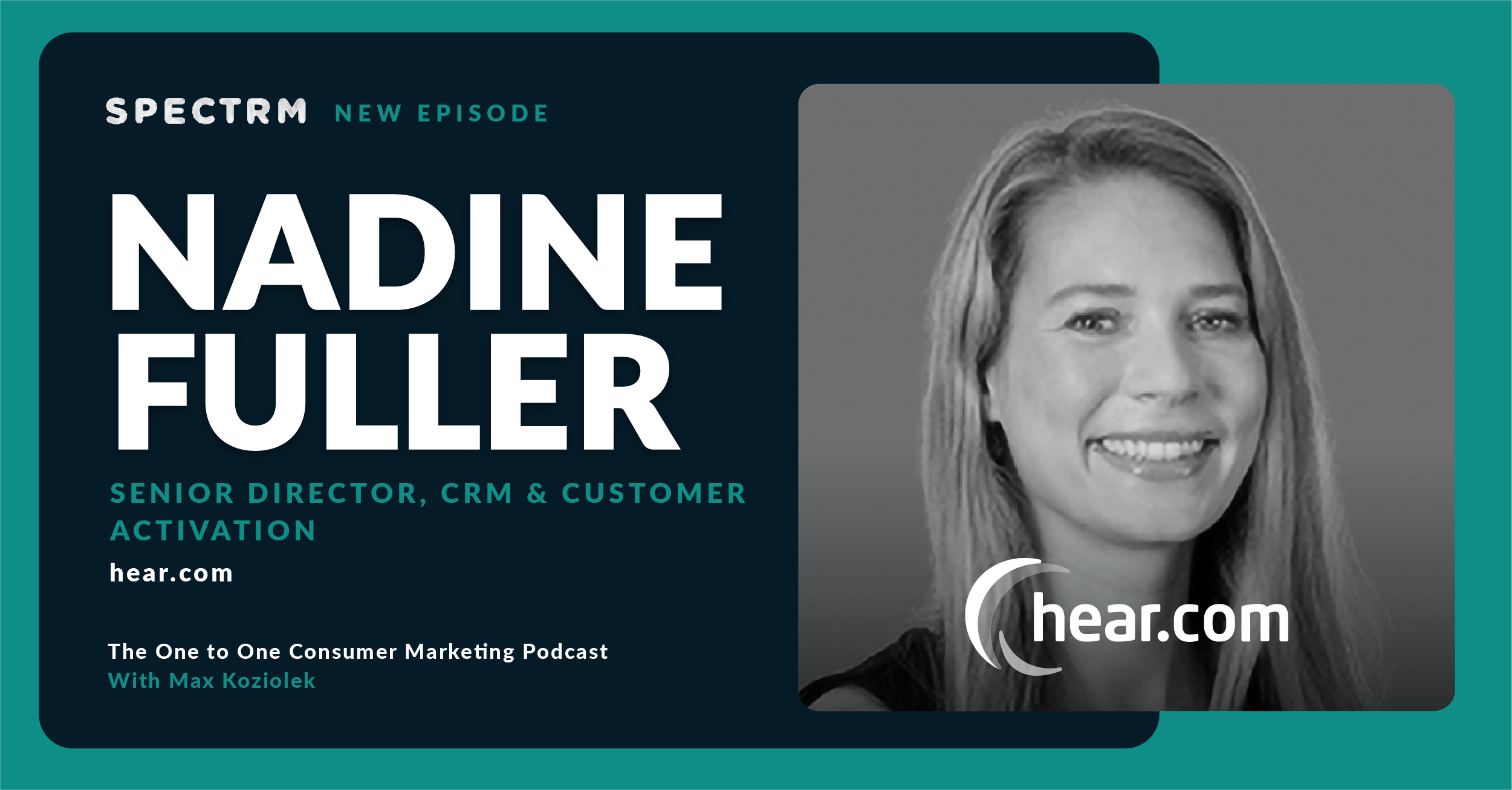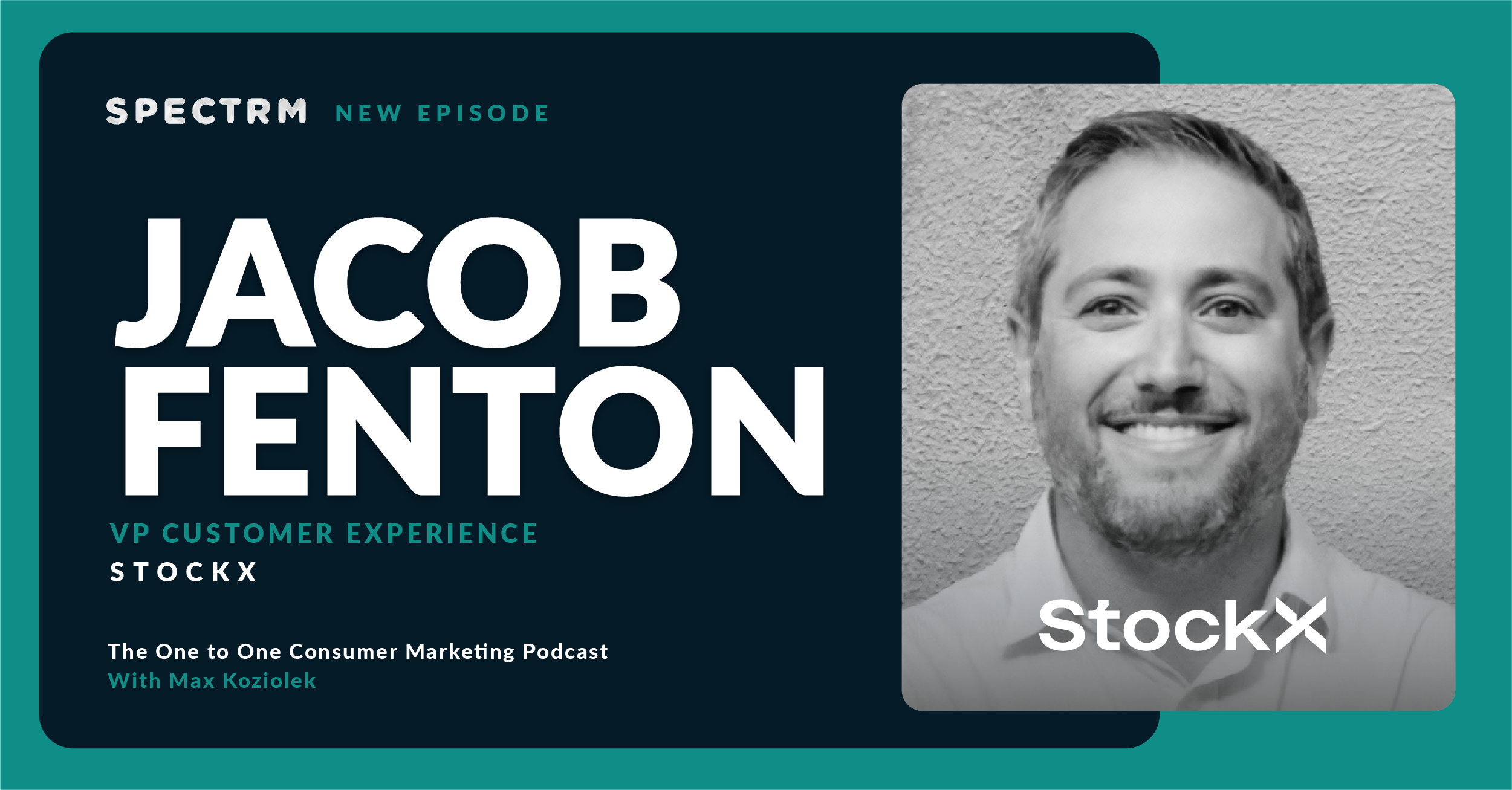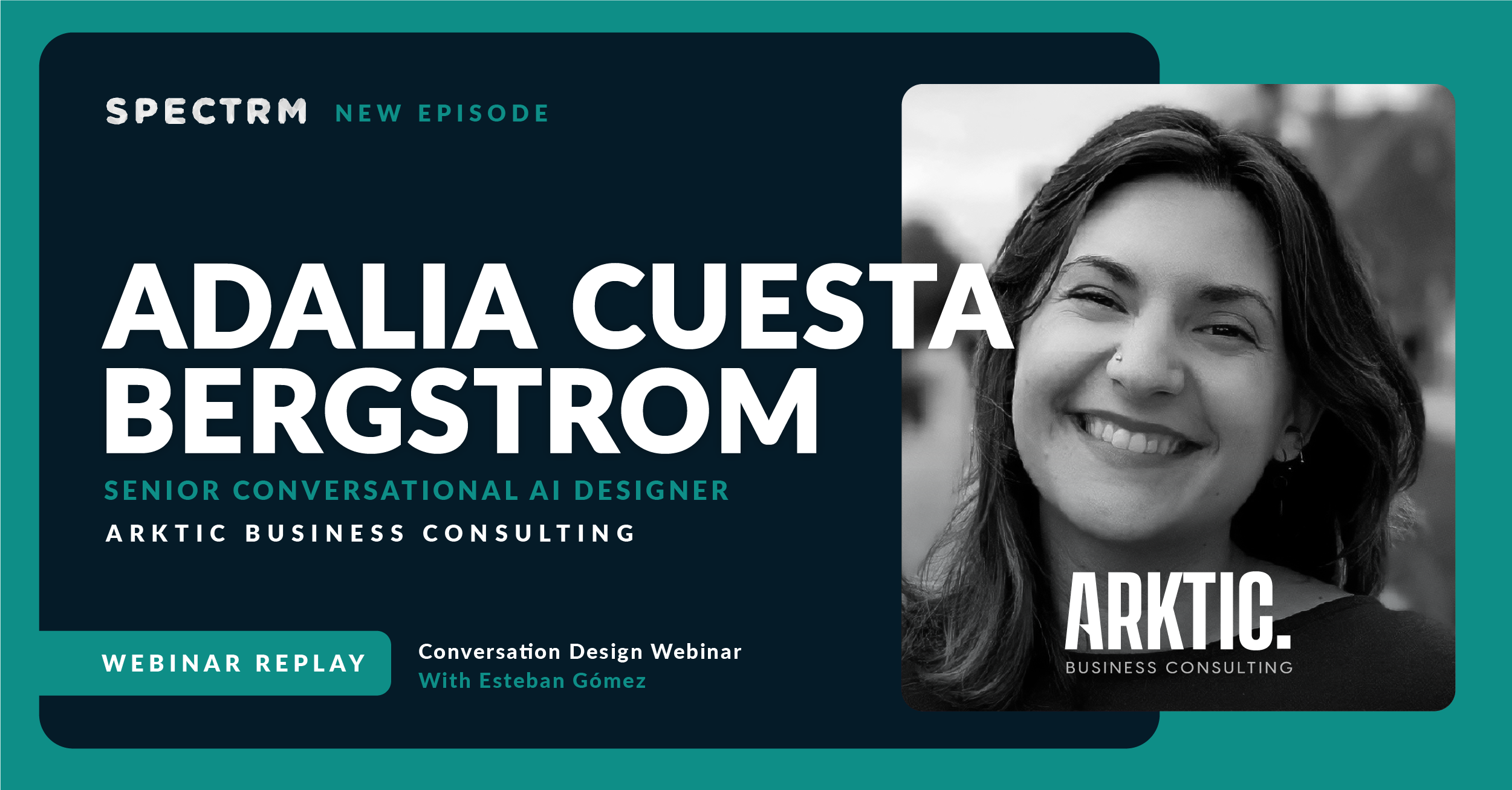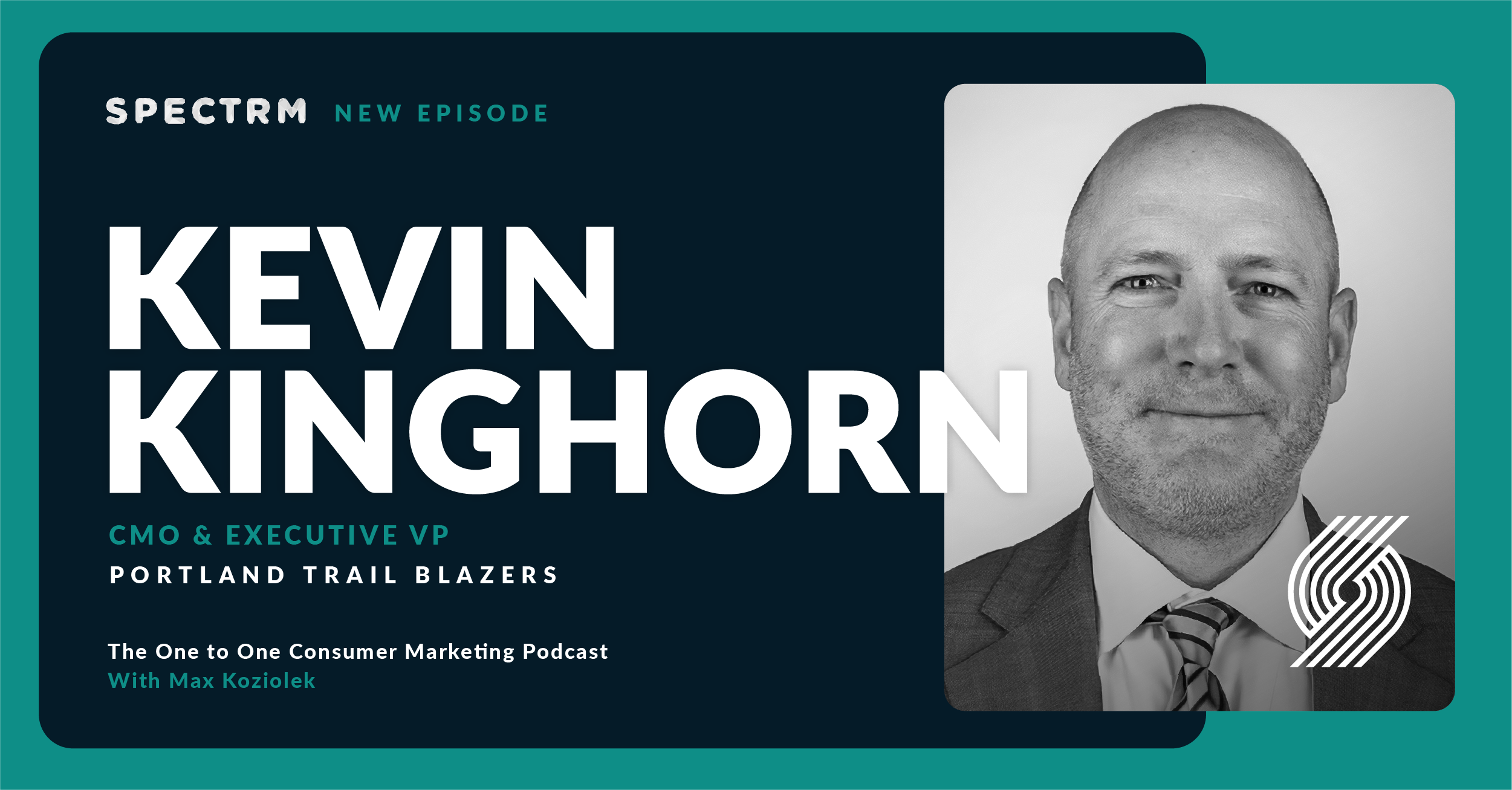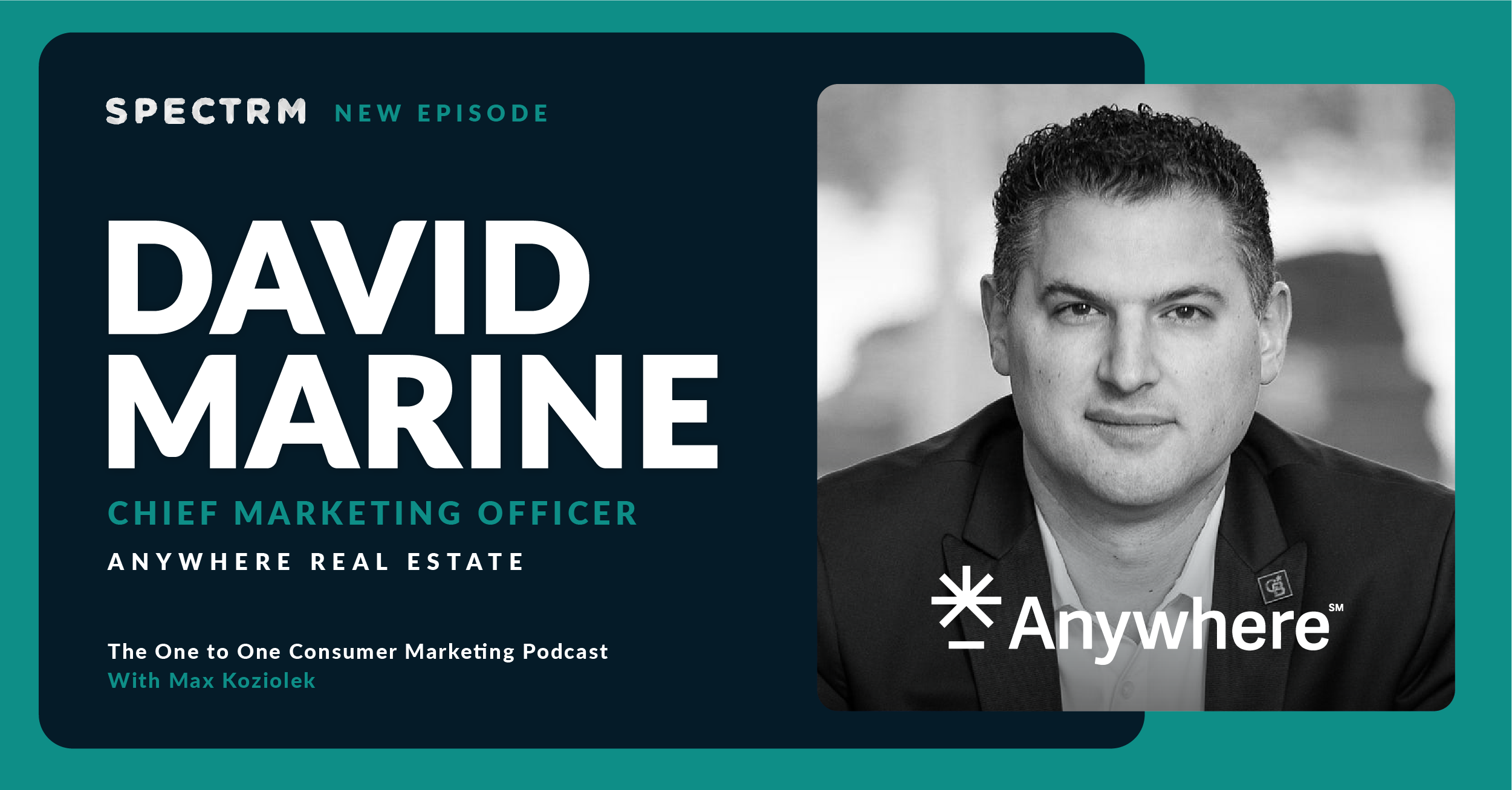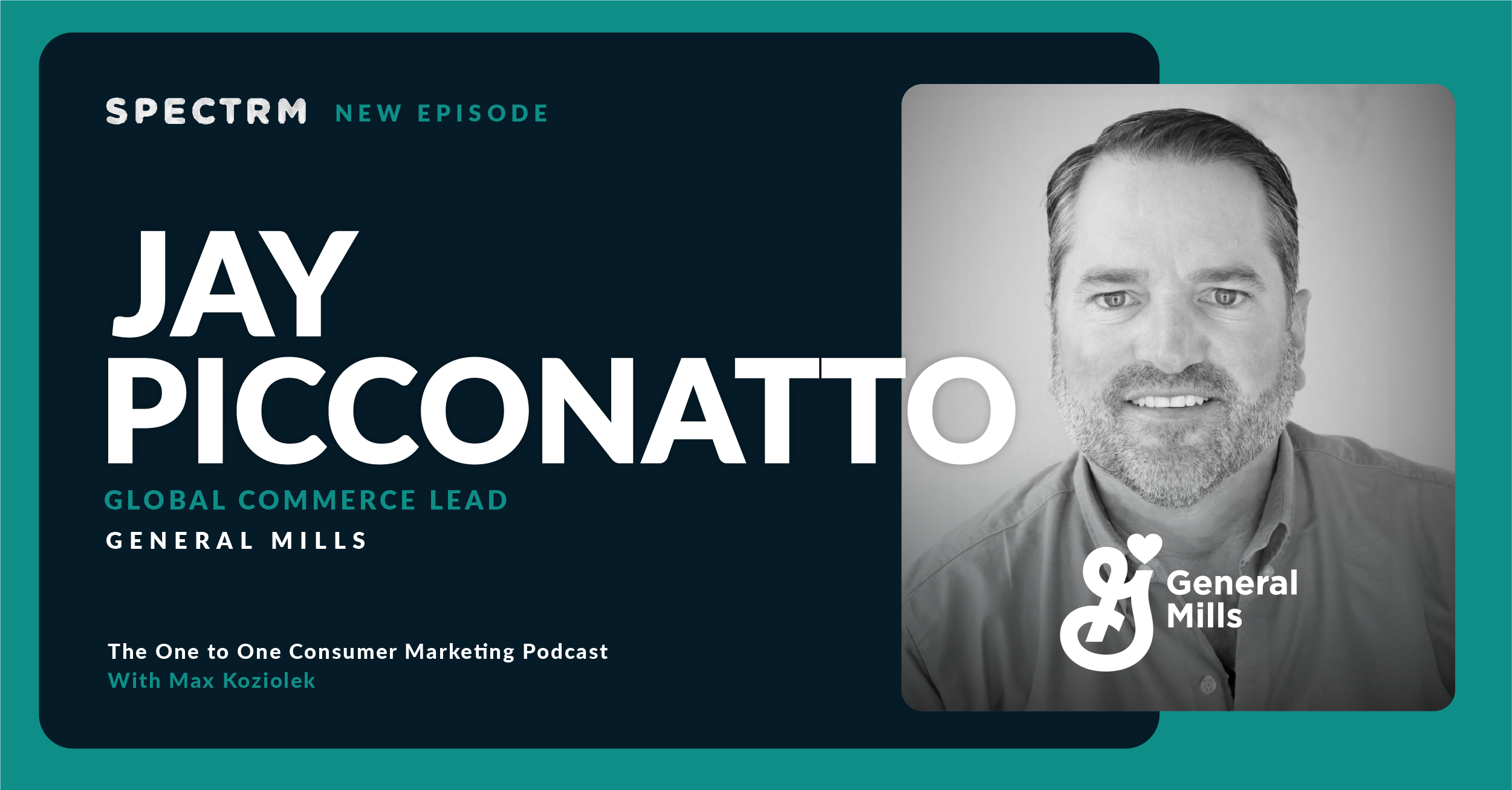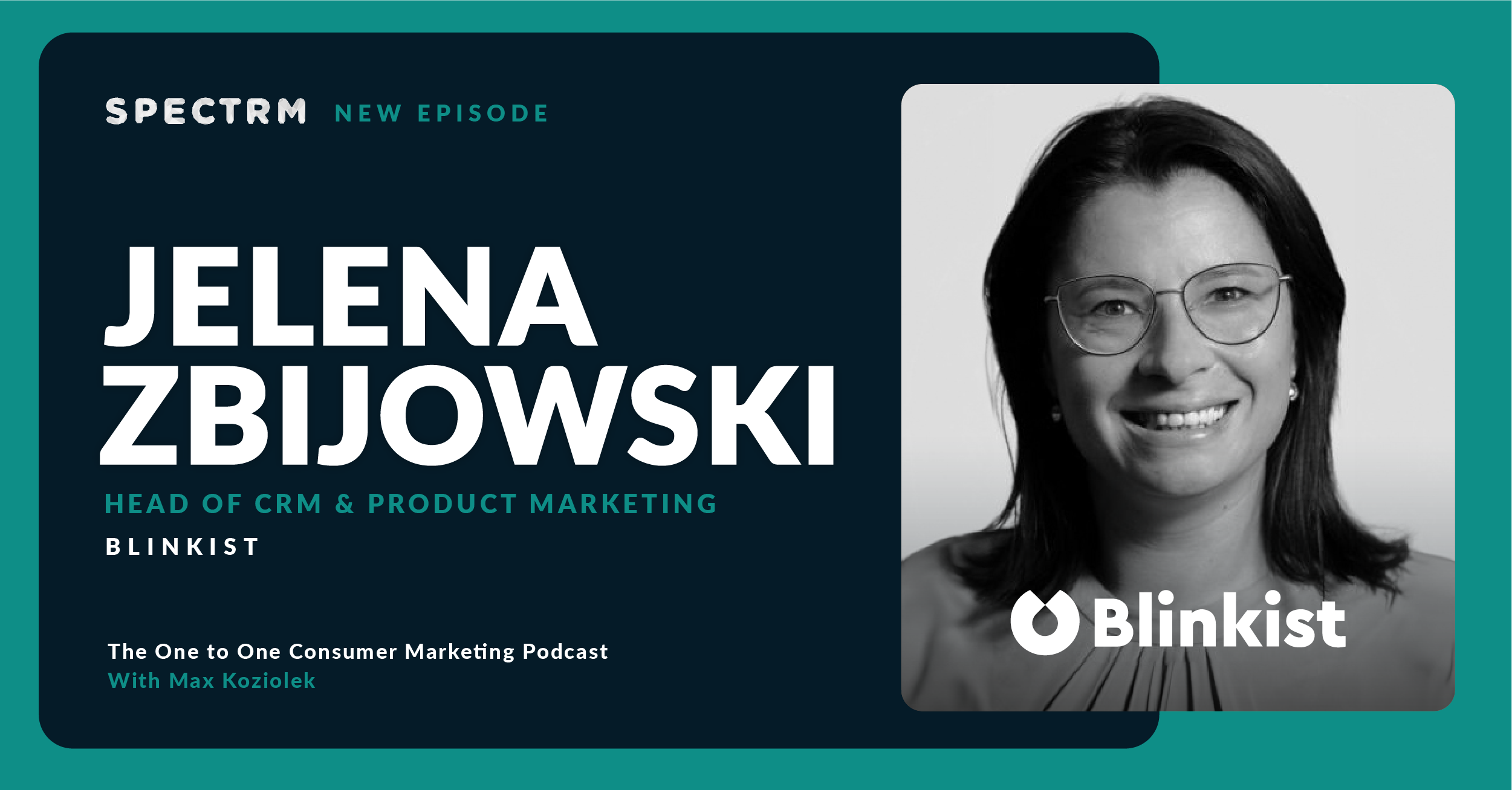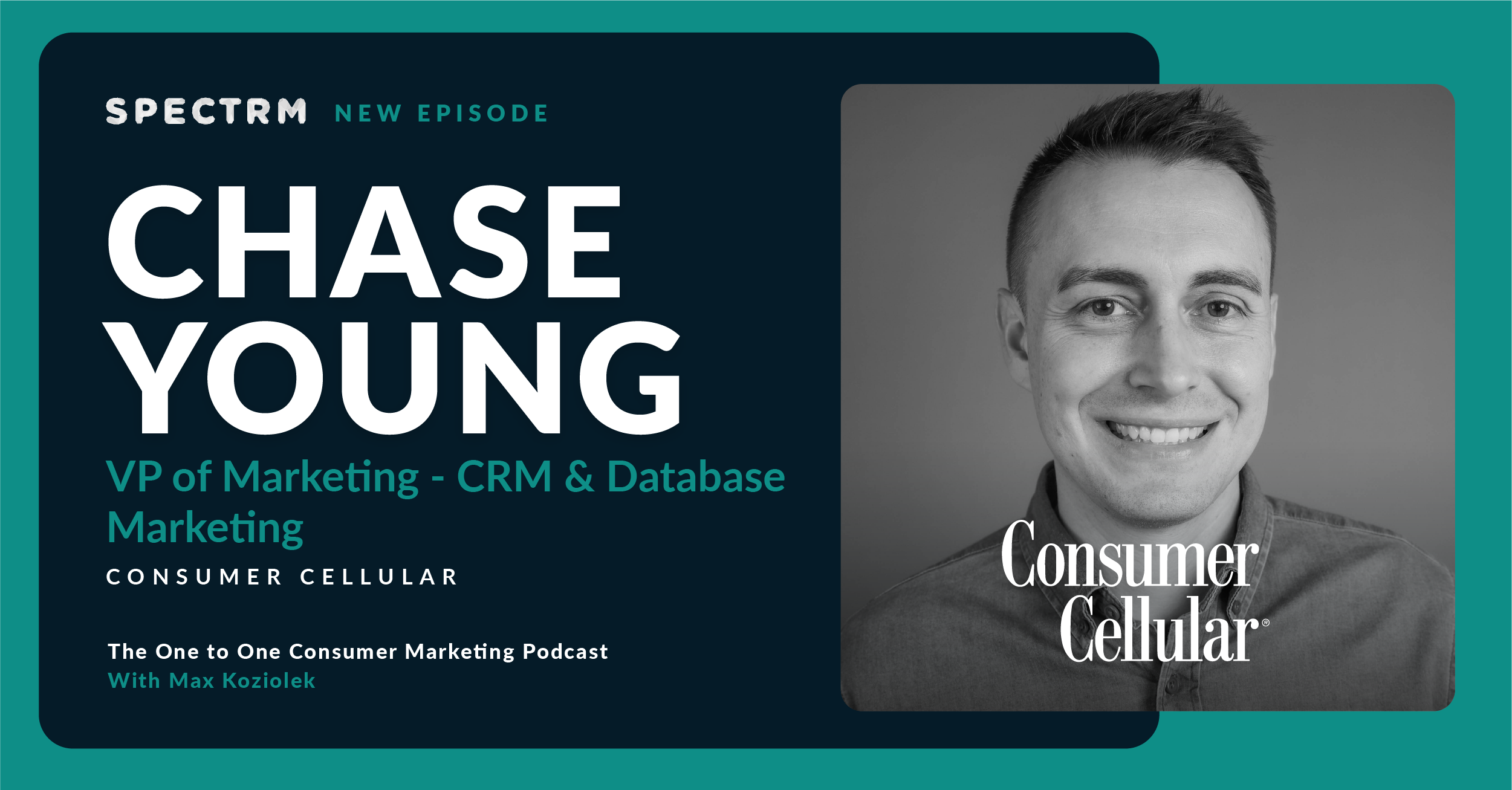Summary
In this episode, Ben speaks to Leah Sushelsky, Director Of Communications and Public Relations at GlassesUSA.com. During the episode, they share about the importance of providing a seamless experience for customers, and using technology and data to anticipate customer needs and drive personalization efforts.
Topics discussed
- Leah’s history in brand management, and what connecting with customers looks like when in-house with a brand.
- What the current state of consumer marketing is, and what customers are looking for in a relationship with a brand.
- How to use user-friendly technology — like AI for virtual try-on and a frame finder quiz — to drive personalization efforts for their customers.
- How GlassesUSA.com is driving customer acquisition through a variety of channels, including social media, influencers, and their newsletter.
- Why using data to drive decisions for improved personalization and increased customer engagement is the most exciting trend in marketing today.
- Advice for consumer marketers on how to anticipate customer needs and integrate personalization techniques to improve engagement.
- What the future of consumer marketing is, and why it requires both adapting to change and listening to the customer.
Everything we do, every important executive decision is based on data. And it's always about how can we push ourselves to be better? How can we drive more conversions? How can we be more efficient? How can we optimize?
Guest biography
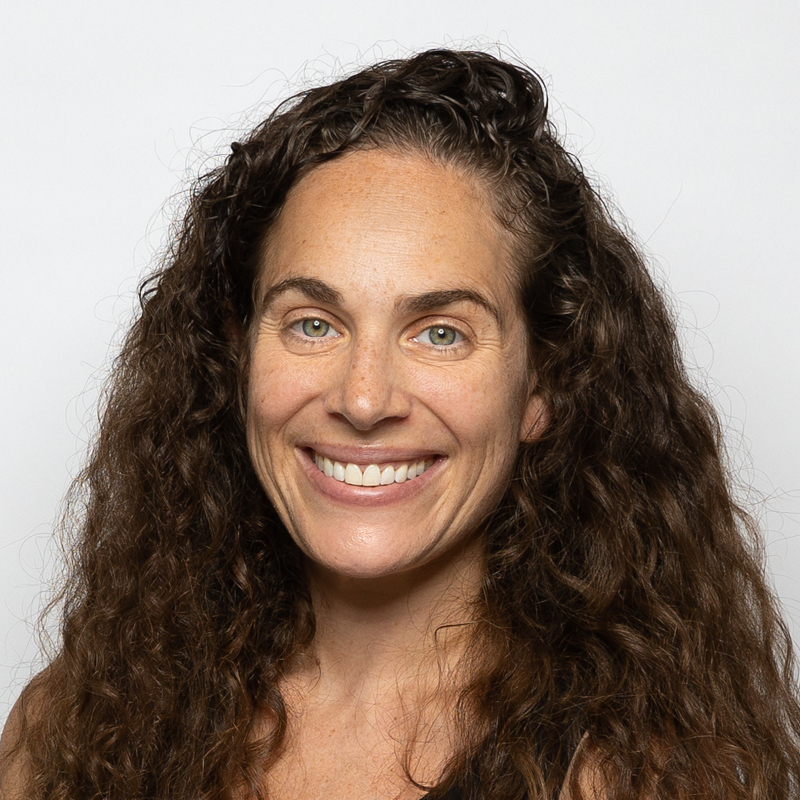
Fifteen plus years of hands-on global marketing communications strategy and public relations experience for disciplines across the board including technology, retail, consumer products, hospitality, fashion, food/beverage, spirits, and celebrity driven events including Sundance Film Festival, Super Bowl, The Academy Awards, The Emmys, and New York Fashion Week.
Experience with a diverse range of clients and in house brand experience including PR efforts for JCPenney, Michael Kors, kate spade new york, QVC, Patron, Express, Tory Burch, Smoothie King, Volkswagen, and many more between LA and NY.
I excel at driving corporate strategy and messaging, overseeing national and regional campaigns, content development for digital communication and printed collateral. Strong time management skills and keen understanding of relationship building within an organization and with outside vendors and agencies.
Company overview
Disrupting the global eyewear industry, GlassesUSA.com is the fastest growing, leading online eyewear retailer. On a mission to change the way consumers purchase eyewear, we offer high-quality prescription eyewear at affordable prices.
Industry: retail | www.glassesusa.com
Subscribe to the podcast newsletter
Transcript
00:00
Welcome to One to One: The Conversational Marketing podcast dedicated to helping modern marketing teams succeed in a messaging first and privacy first world. In each episode, we’ll interview a marketer who is winning with conversational marketing to distill best practices, lessons learned, and actionable takeaways. Here’s your host, Ben Gibert, VP of Marketing, Spectrm.
00:32
Ben Gibert
Hey, everyone, and thanks for listening to One to One: The Conversational Marketing podcast. Today I’m speaking with Leah Sushelsky, Director of PR and Communications at Glasses USA. Leah, thanks so much for joining us on the podcast today.
00:45
Leah Sushelsky
It’s my pleasure. Thanks, Ben.
00:47
Ben Gibert
Yeah. Before we get started, can you tell us more about yourself, your background, and how you ended up in your current role at Glasses USA?
00:55
Leah Sushelsky
Sure. I’ve been in PR and Marketing for the past almost 20 years. I started off on the agency side, and I worked with really big brands like Volkswagen and Express and BMW and Audi and JCPenney, really figuring out what’s the message that they want to say and what does that look like from a communications perspective and from an events perspective? How do we loop in the right celebrities to tell that message and what are we saying to our consumers to get them to care and be interested and purchase our brand for life and really feel a connection? At the end of the day, I really love telling brand stories. It’s just fun. It’s like a pleasure to do it nice.
01:39
Ben Gibert
What brought you from working on the agency side with those big brands to where you are now today at Glasses USA? As Director of PR and Communications.
01:47
Leah Sushelsky
Yes. After I was on the agency side for about ten years, and then I went in house, my first in house job was for JCPenney, which I feel like I got my PhD in retail. It was such an incredible experience to work at such a big retailer with. This was an interesting time because there was a big Ron Johnson error at JCPenney and there was a big takeover of Target executives. We were kind of doing this big rebrand and really figuring out it was right after they did a lot of things to alienate the customer and then, what are we doing to bring the customers back? How do we get those customers back and do things that they’re interested in? I did that for a couple of years, and then I went to Fossil, and at Fossil, I worked on the side of the company that worked with all our brand partners, like the Burgers of the world and the Armanis of the world, and I did PR marketing for those brands.
02:42
Leah Sushelsky
I was lucky enough to join GlassesUSA.com, where we’re the number one retailer of prescription eyewear online.
02:50
Ben Gibert
Wow. Yeah. A lot of big names in the different industries. I’d love to before we dive into that what made you decide that you wanted to go on the other side and go in house after working on the agency side for ten years?
03:04
Leah Sushelsky
Sure. I really love both sides, and I think when you’re on the agency side, it’s such a different perspective, and it’s a perspective of from the outside in. Sometimes when you’re working with so many clients, it’s really hard to form that connection and really figure out, what are we doing? How do we do this? Well, because your mind kind of you’re not there, even though you’re an extension of the team, and you’re very much an extension of your clients because you’re working on a lot of clients, sometimes it’s hard to focus. I love being in house because I feel like I can just live and breathe our brand. It’s so personal to me, and it’s really personal to figure out. I feel so part of it. I see the problems on a day to day of what we’re dealing with, and I feel like since I’m really there on the ground and in the trenches with the brand, I can better better equipped to find solutions that’s going to help elevate our brands.
04:01
Leah Sushelsky
I think when it comes to agency versus in house, the agency is amazing for learning. As we all know, when you’re on the agency side, clients come and go, and that’s like the nature of the beast, and that’s totally okay. When you’re really in the thick of a brand, it’s like you can taste it, you can smell it, it’s like part of your family. When it comes to Glasses USA, I feel like I go to sleep thinking about it, and I wake up thinking about it. How can we better again? How can we make people care? I think when you’re in house at a brand, for me, it’s a lot more personal.
04:35
Ben Gibert
Yeah, that makes a lot of sense. I guess that also enables you to really resonate with the audience of that brand a lot better too, when you’re living and breathing the brand every day. I mean, you were a JCPenney, you’re now at Glasses USA. You’ve seen a lot of different things. I’m curious about the team structure just a tiny bit, because JCPenney, like you said, was like getting a PhD in retail. That’s like a massive operation. What does PR look like there? How does it look at glasses? USA. Can you talk through some of the differences?
05:02
Leah Sushelsky
Absolutely. So it’s same but different. I think we’re talking about JCPenney and anything you work at. Competition is always fierce, but when it comes to a major retailer, it’s even more fierce because your competitors are so innovative. Even I think now, of course, everyone is paying close attention to the competition and figuring out, like, how can we always be not only ahead of the curve, but better? How can we anticipate our competitors moves and blow them away. Also, what are our competitors doing that works? What are our competitors doing that doesn’t work? Also, I think competition is amazing and essential because if you’re working in an industry, when there’s competition, it means that people are paying attention to that. I think competition is absolutely a good thing because it keeps you on your toes. I think especially at Glasses USA, we are a company that is so data driven.
05:58
Leah Sushelsky
We track everything. On the JCPenney side, it was a little more focused on it wasn’t as data driven. At Glasses USA, we optimize. And it’s amazing. Every decision we make is an educated decision based on the past. I think it was a while ago, and I think the digital landscape wasn’t as sophisticated as it is now when it comes to all the tracking tools and all the personalization. When it comes to GlassesUSA.com, we are experts not only at selling people glasses, but also we are experts at owning that online landscape and giving customers the very best experience possible to buy eyeglasses. When it comes to our customers, we want to ensure they are customers for life. We don’t want one time customers. We want to personalize the experience to them and make it so special. Again, that’s through a lot of different channels, be it online, be it Google, or be it CRM in our newsletters or custom content, we want to deliver that catered experience to exactly what the customer wants.
07:07
Leah Sushelsky
So we are top of mind. Like when they need new eyeglasses or they need sunglasses or they need contact lenses, they think of us first because we offer that gold standard when it comes to every part of the customer experience via the website, to any pop ups, to shipping, to customer experience, to the language, to our content, to our social channels, through brand partnerships, you name it. We want to make sure that they are hooked and we have really delivered the best community possible. And look, it’s a conversation. We’re talking to them. We’re giving them things that resonate with them. Not only eyeglasses, that’s just part of it.
07:48
Ben Gibert
Yeah. Thank you so much for that overview. I think it’s very helpful to see how you see the market that’s part of the next question is how you kind of see the state of consumer marketing today. I think even just your journey of shifting from such a major retailer with over a footprint of 1000 stores to somewhere like GlassesUSA.com, which is very much direct to consumer ecommerce kind of powerhouse in your industry, I feel like that tells a lot about how you see the market going . You touched on so many things in terms of data, the personalization aspect, owning all these different channels. Can you tell us more about how you see the state of consumer marketing today and how that applies to what you’re doing at Glasses USA.
08:29
Leah Sushelsky
Absolutely. Yeah. I think who knows what’s going to happen over the next six to eight months or the next year in terms of the economy, we don’t know. At Glasses USA, we are really lucky to sell a product that’s not a nice to have. Glasses are an essential and sight is an essential, and being able to see is an essential. Every single person throughout, just like your day, you need to see to be successful. Sometimes I think people take that for granted because especially when you don’t wear glasses, you don’t even think about it. But glasses wearers. The first thing they do in the morning is they put their glasses on. Finding that perfect pair of glasses, it just kind of gives you the tools to really excel and to be able to do anything. It really just kind of all starts with sight. I think as we kind of go into next year, I think the retail landscape look, I think it looks positive.
09:22
Leah Sushelsky
I think consumers and customers, they’re smart, they’re savvy, they don’t want to overpay. They do their research. They want to know they are getting a quality product. They want to be able to trust the brands, they want to have a connection with the brands and they want to feel part of the brand. They want to feel part of that community. I think it’s really essential to build these lifetime customers. Again, as a brand where you don’t need one pair of eyeglasses every eight months to a year, people usually get new glasses. I think it’s just so important to have that customer connection and constantly communicate to add value to customers’ lives. I think value is not only the product you sell, it’s also what we deliver to their inbox. Everyone obviously is obsessed with social media and their phones, and we want to make people really engage all the time, whether they’re in the market for new glasses or they’re not.
10:25
Ben Gibert
Yeah, I think you touched on so many things that you’re doubling down on customer lifetime value in a time that’s pretty uncertain, which I think is the strategy that is happening, I see, in a lot of different brands. Like you said, you’re also in the enviable position of selling more of a must have versus a nice to have, which is a great place to be when the market is like this. You mentioned cultivating that relationship, cultivating community with your customers to really increase lifetime value. What are some of the ways you’re doing that at Glasses USA? You mentioned those channels, but what are activities that you’re involved with as well personally, and what are you seeing work well?
11:03
Leah Sushelsky
We have an incredible customer experience here in the Glasses USA, and they provide value everywhere. When it comes to buying glasses online, a lot of times people have some questions and even questions of how do I read my prescription. We have a lot of AI tools to make the process of buying glasses online so much more seamless. Even a lot of people, they get nervous buying glasses online because they want to be able to try on the frames. And people have different face shapes. We have an incredible mechanism that you can try on any frame on our website. It’s literally the same as if you’re in a doctor’s office or you have a really nice quiz that takes 60 seconds and we match you with your perfect frame based on a slew of questions. Things so simple as do you want something a little more fashion friendly?
11:51
Leah Sushelsky
What price range do you want to pay? Our biggest USP is really matching the customer with their perfect pair of glasses. Even some people don’t have their prescription. We have this incredible tool where you literally just scan your glasses and we email your prescription for free. I think when it comes to that customer lifetime value, providing as many tech tools as possible, and again, user friendly tech tools that are not scary, that are easy, that are perfectly seamless, but to make the process of buying glasses online so simple and easy and something you can do from your couch.
12:27
Ben Gibert
That’s great. You listed a few different ways that you’re kind of lowering the barrier to shop online for something. People would traditionally go into a store because they feel like they need an eye doctor to find AI transcription, be able to try them on. That’s quite a few different things you’re using to personalize that scale you mentioned. Like the glasses finder quiz like the scanner to be able to give people and then also is trying them on like a filter. It’s like a VR filter that people are getting with their different model types.
13:03
Leah Sushelsky
Yeah, so it’s the best in class technology and people can try on any frame and it goes hand in hand with the quiz. You go on our website, there’s a 60 second quiz, it’s so easy, it’s not very many questions. As soon as you take the quiz, we will deliver handpicked matches based on your answers. Then you can easily try them on. Also if you don’t have your prescription, you can get your prescription via email, totally free, completely seamless. Other than just being that, go to direct to consumer online retailer for glasses. We always strive to make the process of buying glasses as simple as possible and to deliver personalized customer recommendations so our customers can find what they’re looking for as easy as possible and it doesn’t require a lot of heavy lifting on their end.
13:54
Ben Gibert
Yeah, that’s great.
13:55
Leah Sushelsky
It’s really possible as well.
13:58
Ben Gibert
Yes, they’re really like a one to one experience from start to finish that’s built on.
14:03
Leah Sushelsky
Absolutely.
14:04
Ben Gibert
And so what channels are you seeing? You mentioned your website as being kind of the primary medium through which everyone is engaging, but what channels are you seeing work best for kind of acquisition or for where these customers are coming from?
14:18
Leah Sushelsky
Sure, it definitely depends on the customer. A lot of top of funnel channels work really well for us. Obviously, newsletters CRM, we are always focused on kind of alleviating the markup when it comes to prescription eyewear and really giving that best deal possible without compromising on quality. Newsletters are really effective when it comes to communicating our current promotions. It really drives a lot of customers to the website via mobile or via desktop. When they see our current promotions and when they see that, oh, I need glasses, now is the time I can save. I can get a good deal, I can get a best in class product, in a best in class online experience, and I can get my glasses right away. It’s something that fits me, that’s fashionable, that I love. We offer so many different products on our website, and it really depends if people want we have in house designers at GlassesUSA.com and they went to fashion school and they create beautiful designs that are exclusively available at Glasses USA.
15:21
Leah Sushelsky
And people love these brands. We also sell like, the Pradas of the world and the Oakley’s of the world and the Ray-Bans of the world. We also have a very flourishing contact lens business. We have a product called Vista Plus, which is our house brand contact, and they’re incredible. It’s really when it comes to vision correction products, we are the go to. We have it all, and we can deliver on any type of vision correction product for the best price possible and the best online experience possible. Again, via sunglasses, prescription sunglasses, prescription eyewear contact lenses, you name it.
16:02
Ben Gibert
Nice. Okay. You mentioned email as being like a big driver for those purchases from yeah. So, you’re leading PR and communications. How are you getting people aware of the brand as kind of more top of funnel activities? How do people find out about it? How are you driving more of that acquisition?
16:20
Leah Sushelsky
Sure. So obviously, definitely. Facebook, Google, social media, PR activity. We work with a lot of influencers. We’ll be doing a lot of TV, really, you name it. We were just in Alaska, launching a really, really special program to give kids in low income areas throughout the US access to free eyewear. There are a lot of times where kids aren’t doing well in school, and it’s not because they’re not applying themselves. Sometimes it’s simply because they can’t see the board. We just traveled to an incredible village in St. Mary’s, Alaska, where there are 600 people that live there, and there’s no eye doctor at all. In order for a child to get a new pair of glasses, they have to get on a plane. Went with Miss America and Miss Alaska, and we helped the kids there pick out new glasses and creative PR activities, cause marketing activities any way we can really form that important connection with our brand and continue.
17:17
Leah Sushelsky
The conversation of not only doing good and giving back, but offering people this incredible product with a lot of value across multiple channels and doing a lot of storytelling about the product as well.
17:30
Ben Gibert
Yeah, that’s great. You mentioned I think I’ve heard you say connect one to one with your customers a lot. Obviously something I love to hear because this is the one to one marketing podcast.
17:39
Leah Sushelsky
Yeah, it’s an essential, it’s not a nice to have. I think when it comes to having a brand personality, of course, obviously we want to be top of mind when anyone needs any vision correction. We want them to think GlassesUSA.com, but we also want our customers to like us and care about our content and feel connected to our content and want to engage with our content. We want to hear from them, what do they want to see, not only when it comes to buying glasses online, but also in the eyewear category? How can we always be doing better? How can we be giving back again? How can we do more storytelling? From a fashion perspective, what are the eyewear trends? We just unleashed a really nice report that our VP of merchandise and our designers, their names are Hadar, League, and Moore, and they’re incredible.
18:34
Leah Sushelsky
They worked with us on a really incredible report about what are the upcoming eyewear trends that consumers want to see in 2023. I think glasses are a medical product, and we always want to be in compliance when it comes to any HIPAA regulations, and we are, and that’s so important. Also it can be a fashion accessory. It’s something that when you put on glasses, it’s one of the first things people see and it’s personal. It is on your face. And people want to feel good. They want to have confidence. They want to love their glasses. They want to be so excited about their glasses, and we want them to have that extra swing in their step when they get just like if you get a new pair of shoes or you get a new dress, you need to feel like you put on those glasses and you can take on the world.
19:26
Leah Sushelsky
And that’s important. It’s essential.
19:28
Ben Gibert
Yeah, absolutely. I mean, hearing you talk about it also feels like you have a very strong position in what your messaging strategy is, right? You talk about like, this is a medical device, but at the same time, there’s this overlay of fashion and the decision making processes, and we want people to feel good. Can you talk me through how you build that positioning or how you do that at Glasses USA? Where does that come from for you?
19:51
Leah Sushelsky
Sure. So, again, when it comes to our marketing efforts, we’re all about personalization and personalize that online journey and making it as seamless as possible for our customers. We also want to personalize, like, we want to sell the best pair of glasses for you. Every person wants something different when it comes to their glasses and the shape, and people have different prescriptions. What is that best pair of glasses for you to make you feel confident, to make you succeed, to make you feel like you can take on the day. It’s like, what are you looking for in glasses? Do you care about the style? Do you care about price? Do you care about brand? Do you care about thickness? Do you care about even where they sit on somebody’s nose? We want them to be comfortable. The worst thing is having to always push up your glasses all the time.
20:42
Leah Sushelsky
That’s annoying. That’s like annoyance that you shouldn’t have to deal with. We want them. The person that buys glasses from us, we are so concerned with fit and with confidence, and they need to be able to see, and they need to love them. They need to feel comfortable in this pair of glasses so they have a positive impact on this person’s life and on this person’s day. And it’s all connected.
21:07
Ben Gibert
Yeah, it sounds like it’s very much like the customer is at the heart of everything that you’re doing.
21:13
Leah Sushelsky
All about the customer. Look, we wouldn’t be in business if it weren’t for our customers. We love our customers, and it’s a two way street. We want to know, what do they care about, what’s important to them, what’s special to them? Again, not only from a product perspective, but also like that online funnel of when they’re checking out. How do we make the checkout process more seamless? How do we make the lens funnel more seamless when it comes to even putting in their prescription? We have a lot of tech tools that we’re going to be unveiling in the coming months to make that process more seamless in terms of even just putting in their prescription or uploading their prescription or how do we make that process as fast and easy as possible and always be customer first. Even when the customer has questions or they need a reference or they’re figuring out what tint to add to their glasses or what tint makes the most sense for them.
22:07
Leah Sushelsky
I think always being customer first and having the customer at the forefront of everything we do, it just makes us better.
22:15
Ben Gibert
Yeah, absolutely. I mean, you mentioned the conversations, you mentioned getting a lot of feedback from customers, like learning from their inputs. What is the channel that you’re doing that right now on? Where are these conversations happening?
22:26
Leah Sushelsky
Yeah, we have a 24 hour chat bot that answers questions in real time. We ask questions. We’re always there for the customer and we always want to alleviate any pain points and educate and provide value so they have a better experience on our site.
22:42
Ben Gibert
Yeah. You mentioned already, there’s a lot of you’re looking at optimization across pretty much every service that you’re interacting with. Nice. So, I mean, you mentioned obviously, data like being customer first for you. What is kind of the most exciting consumer marketing trend at the moment? What are you excited to dig into at Glasses USA or just that you’re seeing in the landscape in general?
23:08
Leah Sushelsky
I really think data we live and breathe and it comes to every aspect of our business, even from with our merchandise team. They use data to figure out what frames are we designing, how are people shopping, what do they want to see, what frames look good on people, what frames are comfortable to people in everything we do, every important executive decision is based on data. It’s always that data about how can we push ourselves to be better, how can we drive more conversions, how can we be more efficient, how can we optimize? And it’s always changing the customer landscape. Again, what the customer wants, that’s always changing as well. How can we anticipate the customers’ needs using data to make those educated decisions? We stay at the forefront and we stay at the top.
23:55
Ben Gibert
Yeah, and it sounds like you’ve invested heavily in ways to collect zero and first party data about what your customers want to really drive for those decisions.
24:05
Leah Sushelsky
Yeah, and I think we have a robust data team that we’re really just figuring out how we can better for the customer and how we can perfect their experience and again, how we can make everything more seamless so they shop from us for life. Like pricing or direct to consumer or shipping or customer experience or content or social PR influencers consumer activations, cause marketing. How do we really use the data to drive those conversations?
24:40
Ben Gibert
Yeah, and ultimately, it sounds like it’s very much the customer experience is what’s going to help you win this market. That’s where you’re focused, looking maybe forward. What are kind of the top three pieces of advice that you would have for other consumer marketers?
24:58
Leah Sushelsky
Sure. I think, look, anticipate changes in the market and be reactive. I think always anticipate customer needs and be at the forefront of those customer needs. You kind of already have a way of figuring out how to shift and how to pivot. I think listen, a lot of brands, they don’t listen. We are a brand that we are always listening and we’re always figuring out how do we provide just an exceptional experience. It’s getting those customers for life that’s when we’re going to be successful. We want people that love our brand. Of course, we want them to love our product, and we want them to love shopping from us, and we want them to love our content. We want them to love our brand and post about our brand and talk about our brand and tell their friends about our brand and be so excited to interact with our brand.
25:49
Leah Sushelsky
Be so excited when they get a pair of glasses. We want them to scream from the rooftop that they got these glasses at GlassesUSA.com and they loved it. They not only love the glasses, but they love the brand in general. And that’s important.
26:03
Ben Gibert
Yeah. Everything comes down to just focusing on the customer and their needs and then anticipating what those needs might be. Yeah. Five years from now, you’ve mentioned investments in lots of different personalization tech to make the process more seamless, but where do you see the future of consumer marketing? Or what do you have your eye on at Glasses USA?
26:25
Leah Sushelsky
So, I think really anticipating market changes and just getting ahead of market changes and adapting. Always, always adapting. So, of course, who knows what’s going to happen in the next five years, but just putting the customer at the forefront and really figuring out tools to make them happy and to make it work for them and to make our brand at the forefront when it comes to what the customer wants, and just really delivering that best experience possible. So we have them for life. We want to be the glasses provider for life because this is a product that people will need for life and really providing a great experience through not only data driven initiatives, but great storytelling and brand connections and creating that community of glasses wearers and being proud to be a glasses wearer, because it’s an amazing it’s an incredible accessory that makes you able to see.
27:21
Ben Gibert
Yeah. I mean, it’s a powerful story. When you combine that with all of your initiatives on data and being customer first, it looks like you’re making the right moves for what’s going on in the market. Leah, that’s all we have time for today, but thank you so much for coming on the show. If people want to follow your journey and learn more about you and GlassesUSA, where should they go?
27:42
Leah Sushelsky
GlassesUSA.com, check us out.
27:45
Ben Gibert
Okay, thank you so much for coming, everyone. Thank you for listening. Again, if you want to learn more about Spectrm and what we do, please go to Spectrm.io or check us out on LinkedIn under Spectrm. If you have any feedback on this episode or the podcast in general, don’t hesitate to DM me or send some comments on LinkedIn. I always love to hear from our listeners. Thanks so much for listening today and have a great rest of your day.
